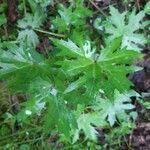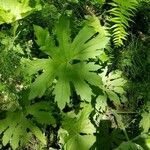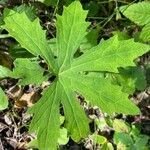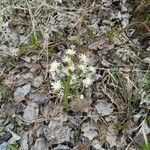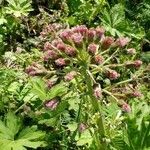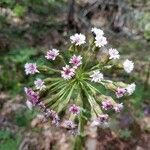A herb in the daisy family which keeps growing from year to year. It has creeping underground stems. The leaves are heart shaped. They have teeth around the edge and slight lobes. The leaves have white soft hairs underneath. There is a single leaf on each stem coming from the rhizome. The flowers are yellowish-white or red and in open spikes. The flowers appear before the leaves expand. There are 5-7 flowering heads at the top of the stem.
